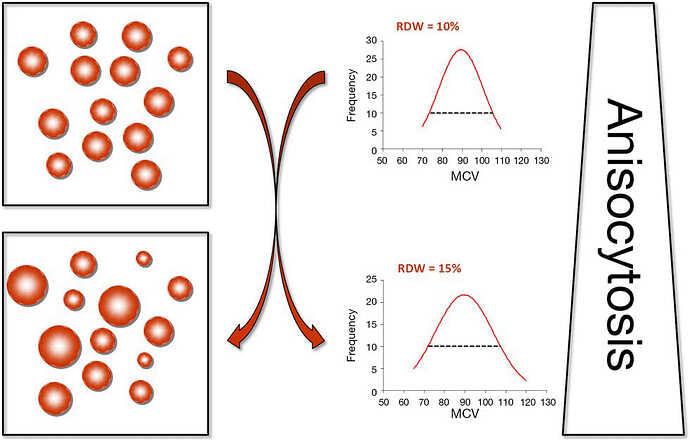Red blood cell distribution width (RDW):
Although the normal size of RBCs is usually comprised between 80 and 100 fL, a number of physiological (e.g., pregnancy, ageing or physical exercise) and pathological (e.g., iron deficiency anemia, hemolytic anemia, hereditary spherocytosis, congenital hemoglobin disorders such as thalassemia or hemoglobin variants) conditions may impair erythropoiesis and hence promote a higher degree of heterogeneity of RBC volumes . This process is characterized by the appearance of smaller (i.e., <60 fL) and larger (up to 120 fL) elements, which is conventionally known as anisocytosis . The red blood cell distribution width (RDW) is a rather simple measure of RBC size heterogeneity, which is calculated by dividing the standard deviation (SD) of erythrocyte volumes for the mean corpuscular volume (MCV) (i.e., RDW = SD/MCV). Although result can hence be expressed either in absolute values (i.e., RDW-SD) or as a percentage (i.e., RDW-%), the latter approach is more widely used in routine laboratory practice. Since the RDW is not a direct measure of anisocytosis, but can be easily and inexpensively calculated from the MCV, the vast majority of hematological analyzers automatically provide the RDW value within the complete blood cell count (CBC).
